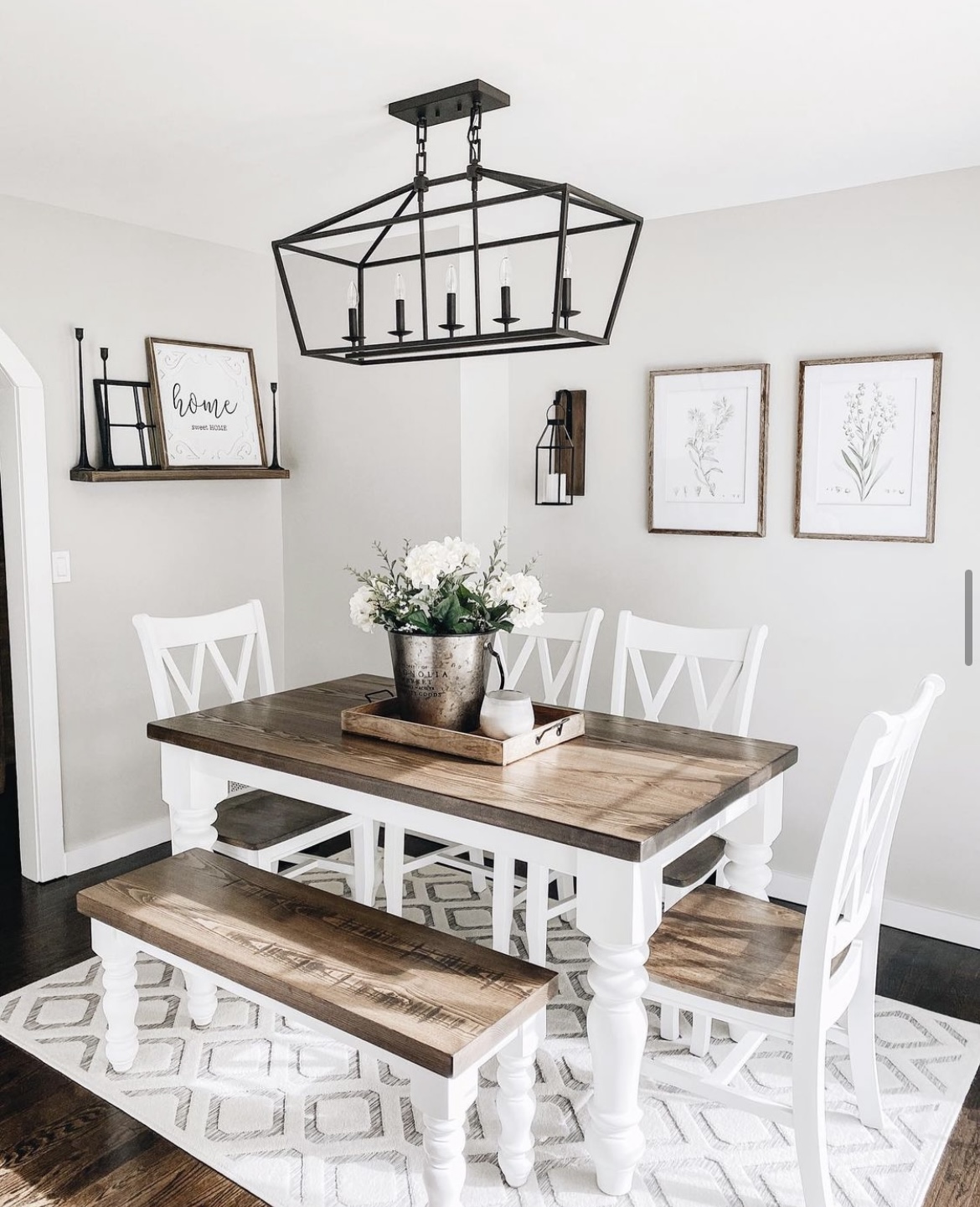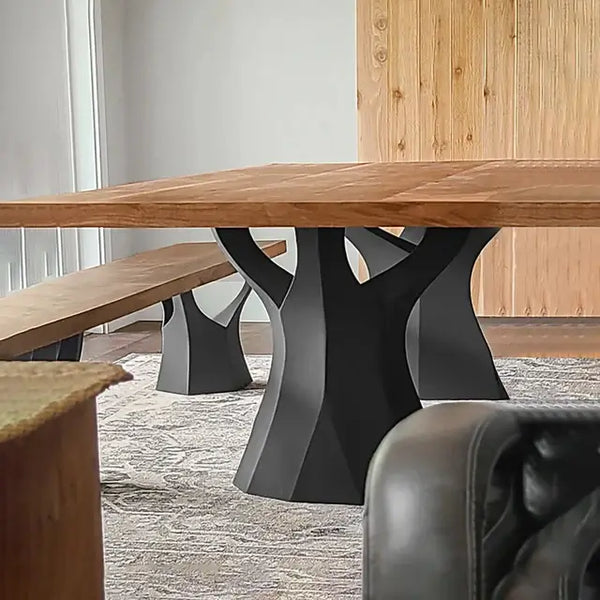From Traditional to Modern: Find the Perfect Eating Space Table Legs for Your Style
While traditional layouts such as cabriole and turned legs evoke a feeling of classic elegance, modern styles like barrette and geometric options provide a possibility for striking visual rate of interest. As you take into consideration these components, the question stays: just how can you perfectly integrate these varied leg designs to create a harmonious eating experience?
Understanding Table Leg Styles
The variety of eating area table leg styles can significantly affect both the visual appeals and performance of the area. Each leg design contributes distinct functional features and aesthetic components, dealing with varied design choices and usage demands. Comprehending these styles is critical for choosing the appropriate table that lines up with your general indoor style vision.
For example, conical legs supply a clean, timeless appearance that can enhance a space's sophistication, while stand bases provide security and maximize legroom, making them ideal for smaller sized areas. Hairpin legs, a trademark of mid-century modern layout, present a commercial style, enabling an airy, open feeling. Trestle legs evoke rustic charm, giving robust assistance and a sense of eternity.
Additionally, the choice of products plays a considerable duty. Wood legs can bring heat and structure, whereas metal alternatives commonly communicate a smooth, modern ambiance. Inevitably, recognizing table leg styles is essential for developing a cohesive dining location that mirrors individual style while making certain usefulness and convenience. By attentively thinking about these elements, you can boost both the visual and functional allure of your eating space.
Typical Table Leg Options
When selecting eating room table legs, typical options often personify ageless style and workmanship. These designs reflect an abundant heritage and a commitment to quality, making them suitable for those that value timeless aesthetics.
One of the most iconic conventional leg designs is the cabriole leg, characterized by its elegant bent form. This style commonly includes decorative carvings and is most typically discovered in Queen Anne and Chippendale furniture. Another popular alternative is the transformed leg, which boasts a collection of smooth, rounded forms that offer a classic appearance while maintaining security.
Moreover, the straight leg, while easy, supplies a tough and unadorned framework that can blend perfectly with a range of tabletop designs. For those attracted to ornate describing, claw-and-ball feet legs stimulate a sense of magnificence and can work as a sensational prime focus in any kind of eating area.
Last but not least, stand bases, although not purely legs, give a different typical option that permits adequate legroom and can be wonderfully sculpted. Each of these standard leg styles adds to the general setting of an eating room, weding feature with visual charm.

Modern Table Leg Styles
Modern table leg layouts supply a diverse variety of styles that emphasize ingenious materials and tidy lines. These styles usually prioritize functionality while serving as striking focal factors within a dining area. Minimalist appearances are common, with legs crafted from products such as steel, glass, and engineered timber, which add to a ventilated and modern feeling.
One prominent style is the hairpin leg, characterized by its slim, tapered structure that provides security without overwhelming the table top (dining room table legs). This style is commonly found in mid-century contemporary furniture and can easily enhance numerous dining table forms. An additional pattern is the use of geometric shapes, where legs might handle angular or asymmetrical types, including aesthetic passion and a touch of creativity

Mixing Styles for Distinct Rooms
Typically, house owners seek to create unique eating rooms that mirror their personal style by mixing numerous style elements. This approach enables the unification of varied visual appeals, leading to an unified yet distinct atmosphere. As browse around this web-site an example, pairing a rustic wooden table with sleek, modern-day steel legs can create a captivating contrast that raises the room's general allure.
Additionally, incorporating vintage table legs with contemporary table tops can evoke a feeling of history while keeping a modern-day perceptiveness. Such mixes not only showcase specific taste however also urge creativity, enabling homeowners to curate a room that feels both personal and welcoming.
Color plays an important role in this mixing procedure; choosing table legs that complement or contrast with the existing color pattern can enhance aesthetic passion. For example, whitewashed legs can soften the daring of a dark table surface area, producing a balanced visual.
Tips for Choosing the Right Legs
Selecting the right table legs is necessary for accomplishing both capability and aesthetic allure in your dining area. Begin by taking into consideration the overall design of your room. Standard settings gain from legs that feature complex carvings or transformed layouts, while modern rooms may require smooth, minimal styles.
Following, examine the height and security of the legs. dining room table legs. Standard dining tables vary in between 28 to 30 inches in elevation, so make certain the legs complement this measurement for comfort. Furthermore, durable products, such as wood or metal, can boost security and long life
Examine the leg shape also-- choices include right, tapered, or stand layouts. Straight legs use a classic appearance, while tapered legs can add a touch of elegance. Pedestal bases look here give adequate legroom and are optimal for smaller areas.
Conclusion
In recap, picking the perfect eating room table legs calls for mindful consideration of both contemporary and traditional designs. Typical alternatives such as cabriole and transformed legs offer timeless sophistication, while modern designs like hairpin and geometric forms offer a modern touch. By balancing leg style, elevation, and product with the overall décor, a cohesive and welcoming ambience can be attained. Eventually, the picked table legs must reflect the preferred visual, enhancing the eating experience within the space.
The variety of dining space table leg styles can significantly influence both the looks and performance of the area. Ultimately, comprehending table leg styles is necessary for producing a cohesive eating location that shows my link individual design while making sure usefulness and convenience.One of the most renowned traditional leg styles is the cabriole leg, characterized by its stylish curved form. Straight legs supply a traditional look, while conical legs can include a touch of style.In recap, picking the perfect eating space table legs calls for mindful factor to consider of both contemporary and conventional designs.